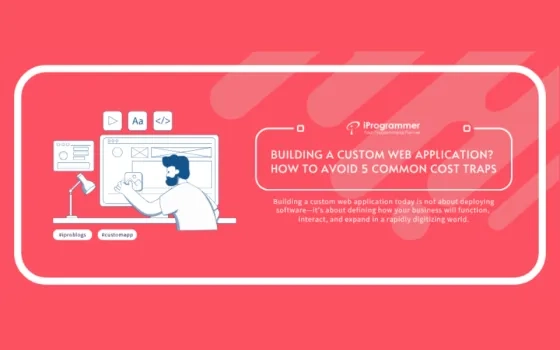Introduction
Telemedicine has emerged as a revolutionary force in the healthcare industry, especially after the COVID-19 pandemic. As social distancing and lockdown measures became the norm, healthcare providers and patients turned to telemedicine as a viable alternative to traditional in-person visits. This shift has not only ensured the continuity of care but has also highlighted the numerous benefits of remote healthcare services. In this blog, we will explore what telehealth is, how it works, who uses it, the processes involved, necessary preparations for appointments, and tips on maximizing the benefits of virtual visits.
What is Telehealth?
Telehealth refers to the use of digital information and communication technologies, such as computers and mobile devices, to access healthcare services remotely and manage healthcare. It encompasses a wide range of services, including virtual doctor visits, remote patient monitoring, electronic health records, and mobile health applications. Telemedicine, a subset of telehealth, specifically involves clinical services delivered remotely through technology.
The primary goal of telehealth is to enhance patient care and accessibility, particularly for those who may have difficulty traveling to healthcare facilities due to distance, mobility issues, or other barriers. Telehealth can include:
-
Live Video Conferencing: Real-time interaction between patients and healthcare providers.
-
Remote Patient Monitoring (RPM): Collecting health data from patients in one location and transmitting it to healthcare providers in another location.
-
Mobile Health (mHealth): Health care and public health practice supported by mobile devices such as phones, tablets, and other wireless devices.
-
Store-and-Forward: Transmission of recorded health history (e.g., X-rays, photos) through a secure electronic communication system to a healthcare provider.
How Does Telehealth Work and Who Uses It in the Healthcare Sector?
Telehealth works through the integration of various technologies that facilitate communication and data exchange between patients and healthcare providers. These technologies include video conferencing software, secure messaging platforms, remote monitoring devices, and mobile health applications.
Key Components of Telehealth
-
Video Conferencing Tools: Applications like Zoom, Skype, or specialized telehealth platforms enable real-time video consultations between patients and healthcare providers.
-
Remote Monitoring Devices: Wearable devices and home health monitoring systems that track vital signs, glucose levels, heart rates, and other health metrics.
-
Electronic Health Records (EHRs): Digital versions of patients' paper charts that provide real-time, patient-centered records accessible to authorized users.
-
Mobile Health Apps: Applications designed for health management, such as fitness trackers, medication reminders, and chronic disease management tools.
-
Secure Messaging Platforms: HIPAA-compliant messaging systems that ensure patient data privacy and confidentiality.
Who Uses Telehealth?
Telehealth is utilized by a broad spectrum of healthcare providers and patients, including:
-
Primary Care Physicians: For routine check-ups, follow-ups, and managing chronic conditions.
-
Specialists: For consultations, second opinions, and managing specialized treatments.
-
Mental Health Professionals: For therapy sessions, counseling, and psychiatric evaluations.
-
Rehabilitation Therapists: For remote physical therapy sessions and monitoring progress.
-
Home Health Care Providers: For managing patients with chronic illnesses and providing post-operative care.
-
Patients: Particularly those in remote or underserved areas, with mobility issues, or requiring frequent monitoring.
What is the Working Process of Telehealth?
The working process of telehealth involves several key steps to ensure effective delivery of healthcare services remotely. Here’s a typical workflow for a telehealth consultation:
1. Scheduling the Appointment
Patients can schedule telehealth appointments through online portals, mobile apps, or by calling their healthcare provider’s office. The appointment details, including the date, time, and platform to be used, are communicated to the patient.
2. Preparing for the Consultation
Before the consultation, patients may need to complete pre-visit questionnaires or provide health updates through the telehealth platform. This information helps the healthcare provider prepare for the consultation.
3. Technical Setup
Both the patient and the healthcare provider need to ensure they have the necessary technology for the telehealth session. This includes a device with a camera and microphone, a stable internet connection, and access to the telehealth platform.
4. Conducting the Consultation
During the consultation, the patient and healthcare provider connect via a video conferencing tool. The provider reviews the patient’s medical history, discusses symptoms, and may conduct a visual examination. Remote monitoring data, if available, can also be reviewed.
5. Post-Consultation Follow-Up
After the consultation, the healthcare provider documents the visit in the patient’s EHR and may provide follow-up instructions, prescriptions, or referrals for additional care. Patients can often access their visit summary and any prescribed treatments through the telehealth platform.
6. Billing and Payment
Billing for telehealth services typically follows the same process as in-person visits. Insurance providers increasingly cover telehealth services, and patients can make payments through secure online portals.
What Preparations Do You Need to Do Before Telemedicine Appointments?
Proper preparation is key to ensuring a successful telemedicine appointment. Here are some steps to help patients prepare:
1. Check Your Technology
-
Ensure your device (computer, tablet, smartphone) is fully charged or plugged in.
-
Test your internet connection to make sure it is stable and fast enough for video streaming.
-
Check that your camera and microphone are working correctly.
-
Download and install any necessary telehealth applications ahead of time.
2. Create a Quiet and Private Space
-
Choose a quiet, private location for your appointment where you won’t be disturbed.
-
Ensure good lighting so that the healthcare provider can see you clearly.
-
Have a notepad and pen ready to take notes during the consultation.
3. Prepare Your Medical Information
-
Make a list of your current medications, including dosages and any over-the-counter supplements.
-
Write down any symptoms, questions, or concerns you want to discuss with your healthcare provider.
-
Have your medical history and any recent test results available for reference.
4. Follow Pre-Visit Instructions
-
Complete any pre-visit questionnaires or forms provided by your healthcare provider.
-
Be ready to provide vital signs if you have home monitoring devices (e.g., blood pressure monitor, thermometer).
How Can You Make the Most Out of Telehealth Virtual Visits?
Maximizing the benefits of telehealth virtual visits involves effective communication and utilizing the available resources to ensure comprehensive care. Here are some tips to make the most out of your telehealth appointments:
1. Be Punctual
Log in to the telehealth platform a few minutes before your scheduled appointment time to ensure everything is set up correctly and to avoid delays.
2. Communicate Clearly
-
Speak clearly and directly into the camera and microphone.
-
Be concise and thorough when describing your symptoms and concerns.
-
Don’t hesitate to ask the healthcare provider to repeat or clarify information if needed.
3. Engage Actively
-
Participate actively in the conversation with your healthcare provider.
-
Take notes on the advice, instructions, and any follow-up actions discussed.
-
Ask questions about your treatment plan, medications, or any next steps.
4. Follow Up on Recommendations
-
If your healthcare provider recommends additional tests, treatments, or follow-up appointments, make sure to follow through.
-
Use the telehealth platform to schedule any necessary follow-up visits or to send messages if you have additional questions.
5. Utilize Remote Monitoring Tools
-
If you have remote monitoring devices, regularly record your health metrics and share them with your healthcare provider.
-
Use mobile health apps to track symptoms, medication adherence, and other health-related information.
6. Maintain Health Records
-
Keep an updated record of your medical information, including test results, treatment plans, and visit summaries.
-
Ensure your EHR is up to date and accessible to your healthcare providers.
Conclusion
Telemedicine has significantly impacted the healthcare industry by providing a convenient, accessible, and efficient way for patients to receive care. It has bridged the gap for those in remote or underserved areas, facilitated continuous care during the COVID-19 pandemic, and offered numerous benefits in terms of efficiency and patient outcomes. As technology continues to advance, the scope and capabilities of telehealth are expected to expand further, making it an integral part of the modern healthcare system. By understanding how telehealth works, preparing adequately for appointments, and actively engaging in virtual visits, patients can maximize the benefits of this innovative approach to healthcare delivery.































